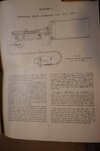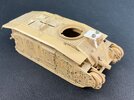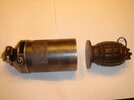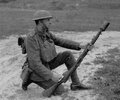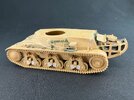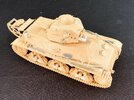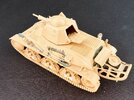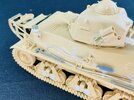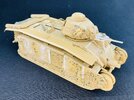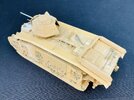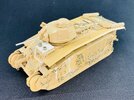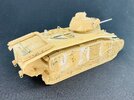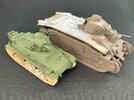...and there is this type, 1917 Enfield No.1 Mk III Lithgow "wire wrapped"
View attachment 149463
View attachment 149464
View attachment 149465
I came across these when reading about the LRDG.
Though it was early in my research, I may have to go back and verify that it was if fact a WW1 version in the account I read about (8 years ago).
In any case, I scratched one together, which may find a place on a vehicle someday.
View attachment 149467
... and the description of use:
1. Insert special .303 blank round that's designed for grenade launching (slow burn I believe ... see pic below) into chamber and close bolt.
2. Establish correct firing position. (see photo)
3. Start inserting special Mk36 grenade (flat bottom plug) into discharger cup until grenade lever is inside the rim of cup and being held down by cup itself.
4. Pull pin out of grenade (lever won't fly off because it's being held down inside discharger).
5. Set aim angle and pull trigger
6. Blank fires and gas expansion sends grenade down range. Note over sized grenade base called the "gas check", that helps seal gases from escaping around grenade body.
Note: Discharger actually has a sliding window like opening with a threaded lock knob (see pic), that allows gas to escape out the side in a controlled fashion. In that manner, the firer can control the amount of gas he permits to escape, so he can vary the distance grenade gets tossed. According to period grenade manual, a fully closed port will launch about 200 yards.
 The way they work is, a bicycle brake cable was attached to the trigger guard and trigger, running inside the turret, where there was a bicycle brake lever that the commander squeezed to fire them. Very Heath Robinson indeed
The way they work is, a bicycle brake cable was attached to the trigger guard and trigger, running inside the turret, where there was a bicycle brake lever that the commander squeezed to fire them. Very Heath Robinson indeed 

